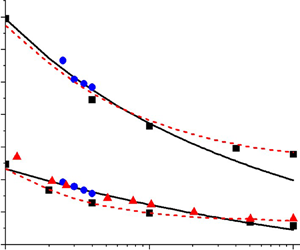Published online by Cambridge University Press: 11 February 2022

Mechanical spark is an important ignition source in various industrial processes involving combustible mixtures and it may cause serious safety issues. In this work, we analysed the ignition induced by hot particles in a combustible mixture. In Semenov's transient ignition criterion, we introduced a hypothetical heat loss coefficient accounting for the temperature inhomogeneity and obtained a revised ignition criterion which allows us to calculate the ignition delay time. Explicit expressions for the critical ignition temperature were derived and used to demonstrate the primary impacts of temperature inhomogeneity on the ignition process. Consistent with experimental and numerical results, the temperature inhomogeneity is intensified by either reducing the particle size or convective heat transfer at the particle surface, resulting in an increase of the critical ignition temperature. For flow separation on the particle surface, the boundary layer problem was solved based on a Blasius series. A temperature gradient for ignition was defined at the location of flow separation to reproduce the experimentally observed phenomenon that ignition prefers to occur first near the flow separation position. It is shown that the unsteadiness of particle cooling makes negligible contribution to the ignition process because of the exceedingly large density ratio between the particle and the ambient gas. In addition, the finite residence time of ignition for a fluid parcel due to its elevation from the particle surface leads to additional growth in the critical ignition temperature. However, such a correction appears to be inconsequential because the ignition of the fluid parcel restricted to the Frank–Kamenetskii region is close to the particle surface.